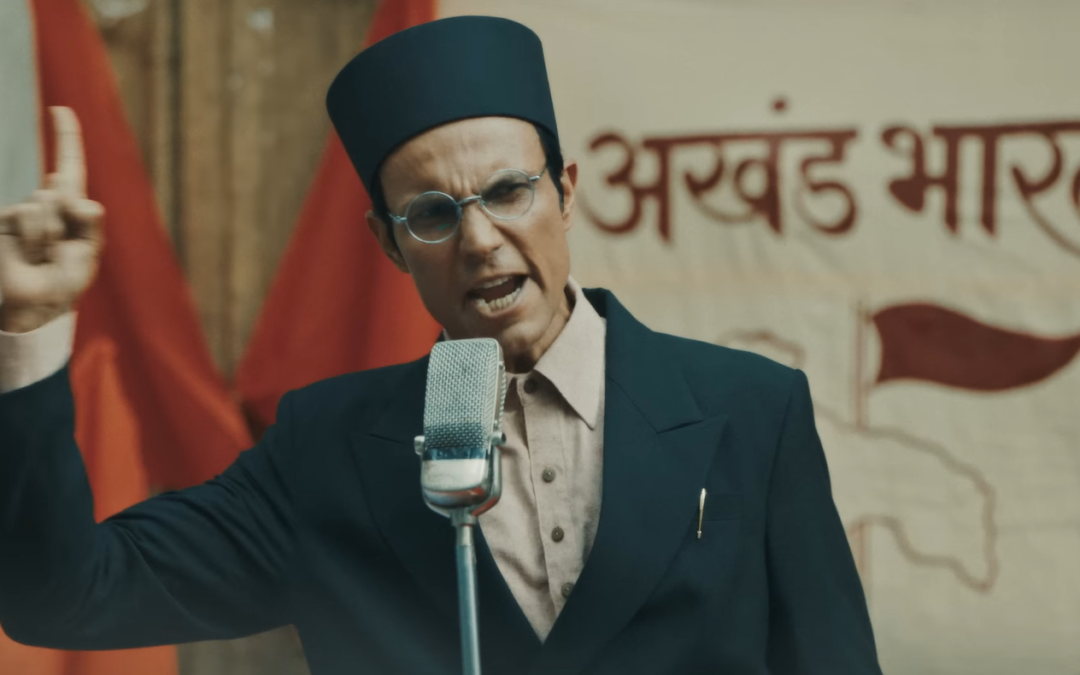Plot:
The cinematic portrayal delves into the life of Vinayak Damodar Savarkar, affectionately known as Veer Savarkar, an Indian reformer and freedom fighter portrayed by Randeep Hooda. His staunch advocacy for armed revolution, regardless of the consequences, has stirred debates within India’s struggle for independence. Enduring years of torment in prison, Savarkar became emblematic of the tumultuous political landscape, paying a steep price for his ideology.
Spanning decades from pre-independence to post-independence eras, the film meticulously captures the pivotal moments of Savarkar’s life. Despite the narrative’s vast expanse, Hooda, both as the film’s director and lead actor, adeptly navigates the complexities of portraying the protagonist, ensuring a compelling cinematic experience.

The biographical portrayal of Savarkar, led by Randeep Hooda, stands as a testament to its commitment to authenticity, aiming to reclaim the integrity and honor of the writer and freedom fighter. Throughout the narrative, Savarkar’s voice resounds, eliciting both admiration for his courage and condemnation for his appeals for clemency to the British. His “Hindutva” movement, advocating for nationalism above religious divides, vehemently opposed inequity, casteism, and societal hierarchies, evoking diverse reactions where one’s fear may be another’s freedom fighter, blurring the lines between champions and adversaries, and revealing the multifaceted nature of truth.
Beyond a mere recounting of historical events, the film unfolds as a suspenseful, gripping, and thought-provoking exploration of its ramifications, ethical dilemmas, and psychological complexities. Each frame serves as a narrative in itself, devoid of superficiality, with minimal distraction from patriotic tunes save for one poignant background melody in the latter part. The dialogue, pulsating with intensity, quickens the heartbeat, while the technical finesse and enthralling storytelling captivate the audience. Particularly memorable are the scenes featuring interactions between Gandhi and Savarkar, showcasing ideological differences without descending into disrespect.
The film’s evocative close-ups and intimate camera work stir poignant recollections of the struggle for freedom, without glorifying violence. Emphasizing the role of “ahimsa” in paving the path to independence, it urges viewers to acknowledge the often-overlooked sacrifices of armed revolutionaries.
Rating: 3.5/5

Under the helm of Hooda, who also assumes the role of director, the film’s directorial choices resonate nearly as powerfully as the intensity of the actor’s performance. Collaborating with cinematographer Arvind Krishna, Hooda transcends the typical episodic structure of a biographical film to depict poignant moments in the life of a freedom fighter, where sacrifice teeters on the brink of futility. This cinematic endeavor earns a commendable rating of 3.5 out of 5 stars.


